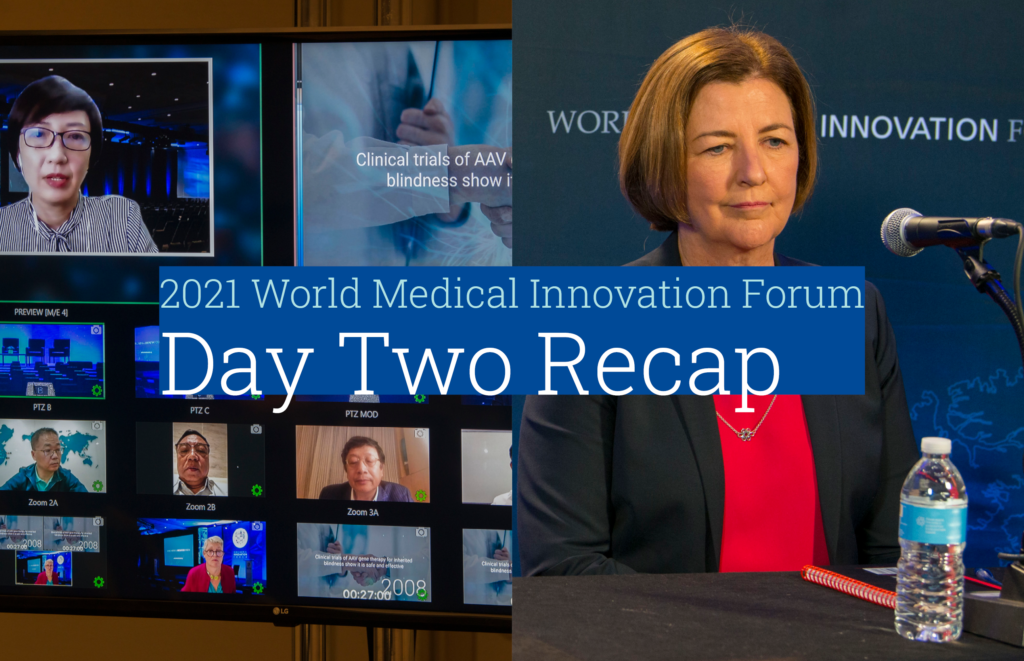WMIF MAIN SITE
2025 Event Site
The day began with a panel discussion on the potential of GCT therapies coming out of China. The country recently revamped its regulatory system to implement a fast track approval process, has a large patient population, and a growing network of hospitals qualified to conduct high scale clinical trials.
Unlike other areas of drug development where the country had a late start, China is on pace with Western countries when it comes to GCT, said Pin Wang, PhD, CSO of Jiangsu Simcere Pharmaceutical.
“The clinical potential of GCTs is so great that everyone wants to commit to developing innovative therapies,” added Richard Wang, PhD, VP & CTO for Fosun Pharma. “There is a lot of investment going to support this ecosystem. Almost every week we see new companies getting funded by VCs and other investment institutions.”
With the overwhelming success of mRNA-based vaccines for COVID-19, is there a potential to use the technology to advance other therapies as well?
Panelists discussed several future uses, from multivalent vaccines (vaccines equipped with multiple antigens) to protect against SARS-CoV-2 variants to improving the efficacy of the annual flu vaccine by including antigens from multiple influenza strains.
The same platform could also be adapted to deliver gene therapies and personalized cancer vaccines, participants said.
“Messenger RNA is the message, and we just have to decide what message we want to deliver to the cell,” said moderator Lindsey Baden, MD, of Brigham and Women’s Hospital. “The promise of this technology could not be more front and center for all of us.”
Could diabetes be the first widespread chronic disease to be treated with GCT? Tackling a disease as prevalent and complex as diabetes will require a massive scale up in production and new strategies to protect transplanted islet cells from the body’s immune system, panelists said.
When it comes to developing new gene therapy treatments for rare diseases, it will be important to convince regulators to accept changes in biomarkers as proof of treatment efficacy in cases where natural disease histories will take too long or be too expensive to use as a control arm, panelists said.
“Rare diseases are highly variable, and biomarkers will tell you what is really going on with the treatment,” said Emil Kakkis, MD, PhD, CEO of Ultragenyx. “We need to stop looking at biomarkers as a compromise.”
Working with rare disease patients is essential when lobbying regulators for approval, added Bobby Gaspar, MD, PhD, CEO of Orchard Therapeutics. “You can only say so much with graphs and data. When families speak about what they’ve been through with their child and the suffering they’ve experienced, I think regulators need to hear that and what a difference a treatment can make.”
Thursday afternoon highlights also included the awarding of six Innovation Discovery Grants (IDG) to Mass General Brigham investigators working on gene and cell therapy (GCT) advancements.
Each award winner will receive $100,000 toward ongoing development and future commercialization, based on the potential to improve health outcomes, meet articulated milestones, and attract follow-on investment as assessed by independent industry experts.
In a new aspect of the IDG awards this year, drug development experts from Bayer will provide mentoring to the awardees, covering scientific, technological, strategic and commercial aspects of innovation from proof of concept to market. Please join us in congratulating the awardees:
Generating Superior ‘Killers’ for Adoptive Cell Therapy in Cancer
Lydia Lynch, PhD, Brigham and Women’s Hospital
Novel Strategies to Enhance Tfr Treatment of Autoimmunity
Peter Sage, PhD, Brigham and Women’s Hospital
Long-Lasting mRNA Therapy for Genetic Disorders
Jinjun Shi, PhD, Brigham and Women’s Hospital
AAV-Based Gene Replacement Therapy Improves Targeting and Clinical Outcomes in a Childhood CNS Disorder
Yulia Grishchuk, PhD, Massachusetts General Hospital
Towards a Permanent Genetic Cure for Spinal Muscular Atrophy, Benjamin Kleinstiver, PhD
Massachusetts General Hospital, Center for Genomic Medicine
Differentiation of Retinal Neurons for Cell Replacement in Glaucoma
Petr Baranov, MD, PhD, Massachusetts Eye and Ear